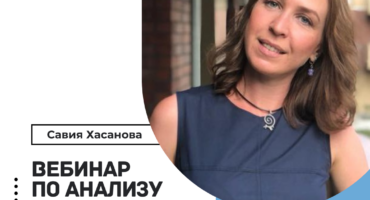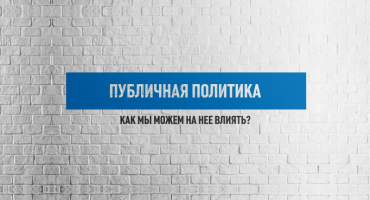Podcasting is a really exciting medium. With the growth of smartphones, there has never been an easier way to create and consume a podcast. Of course, that also means it has become a very competitive space, so you have to understand the ingredients of a successful podcast. So let’s start with the basics.
What is a podcast? In simple terms, it is an audio file. There are, of course, video podcasts and generally, the term podcast refers to audio. Unlike radio podcasting is on-demand. This is what listeners love. They can choose when to listen and how to listen. The podcast needs to be hosted somewhere. If you download a podcast, that audio file will have been hosted on a server somewhere. At this point, you might say, well how is that different from a file I have stored somewhere in the cloud? Well, normally a podcast is listed in directories.
So when you open your podcast app you can search a directory by name or by topic. If you want people to find and consume your podcast, this is massively important. Linked to this is the ability to subscribe to a podcast. If you enjoy a particular show, you can subscribe and when a new episode is uploaded you can be notified and even choose to have that episode automatically download to your device. So podcasts are effective audio files that have been made available for search and download. Now, what equipment do you need? The answer depends on what level of technical quality you are after.
Your smartphone is actually a pretty good audio recorder. With apps like Voice Record Pro or Ferrite, you can record and even do some editing. But whatever you use it is best to use a proper microphone. For this, you do not need to spend a fortune. A mid-range USB microphone will do a very good job. What is often more important is having an environment that is not too noisy or echoey. If you are recording at home use cushions and blankets to reduce echo. You also need to be able to record your podcast. You may have a specialist recording device, but if not, you’ll need an audio recording software like Adobe Audition. A free alternative is an Audacity. If you’re like me, you’ll probably make plenty of mistakes. If you want to edit them out you will need to use this same editing software to cut out mistakes and to add and mix music and so on. It might be best to start with a very simple set-up and go to a more advanced level if your podcast is successful.
Once you are happy with your edited audio file, there is a process to make it available for download. First, you need to export the finished edit to create your audio file. Then you need to have hosting. There are various podcast hosting services and at this stage, you fill in fields with information about the podcast episode and any notes for listeners. It is a very similar process of uploading a video to Youtube. You might think you are finished at this point, but you would be wrong. Your podcast host will give you a link to where your podcasts are stored.
You then need to go to the various podcast directories, such as Apple Podcasts, and get your podcast listed. It will then know what your podcast is about, where it is located and what topic category it fits into. Once the directory indexes your podcast it will normally update future episodes automatically. That means that you do not have to do this step every time you add a new episode. Simply upload it to your host, fill in the information and the rest will happen automatically. (slide) So the technical side of podcasting does not need to be a big obstacle, but what are the ingredients of a successful podcast. Firstly, define your audience.
Podcast tends to be about one topic, as opposed to radio programmes which might need to keep lots of different audiences happy. You need to be very clear about who you are appealing to. It helps to have an audience avatar. Imagine one single listener. How old are they? Where are they? What are their hopes and fears? What are they interested in? Try and get a clear picture in your mind, so when you create your podcast, your ideal listener almost feels like you are talking directly to them. The next point leads on naturally for the last one. Make the topic very specific. For example, a podcast about German football might be more successful than a podcast about sport in general. Why? Because they are only giving the audience content that interests them.
They may have no interest in tennis. A radio programme may have to cover both sports. A podcast has the advantage of being more targeted. It also helps people find your podcast in the directories. If the title, description, and category are all very clear and specific, people interested in that subject will easily find your podcast. Next, choose the right format. So some podcasts interview a different guest every week, others have multiple guests while others tell the stories of a crime and are done in the style of a radio drama.
Which one best suits your topic? How long should it be? Think about your audience. Are they working out or driving to work? That might give you a sense of what the perfect duration would be for your target listener. The format gives your podcast some structure, but the next point is also important. Add personality. People often start listening to your podcast because of the subject, but they stay listening because of the personality of the presenters. Podcasting is a very personal medium. Unlike online video, listeners tend to listen for a much longer duration.
It is about building a relationship with that audience, so the more of your personality you can add, the better. And finally, promote, promote, promote. It is a crowded marketplace, so you need to promote your podcast. Listen back to your podcast and pick out the best few seconds. Add that to the front of the podcast to hook listeners in. Turn it into a video and share it on social media. As listeners to tweet about the podcast. In short, do not think if you put a podcast out there you will automatically get an audience. Like any other content, you need to promote it.
So an example might be our German football podcast. Our target audience is men between 35-50 who follow German football, so the podcast is found in the sports category of directories. They like to hear interviews with experts and former players, so the format is 3 separate ten-minute interviews. They tend to listen while they drive to and from work so the podcast is 30 minutes long. We can pick out some of the best quotes from the podcast and share them across social media to promote it. The interviews are done with a computer and USB mic on Skype and recorded and edited on Audacity. So as you can see, if you have an audience, a topic they like, presented in a format they like and you promote it to them…you stand a good chance of building a following. So now go away and think about your topic, your audience, and your format. I myself have created podcasts by interviewing people in an airport waiting area using my phone. So I’d encourage you to start with what you have and get your podcast out as soon as you can.
If you have found a spelling error, please, notify us by selecting that text and pressing Ctrl+Enter.






